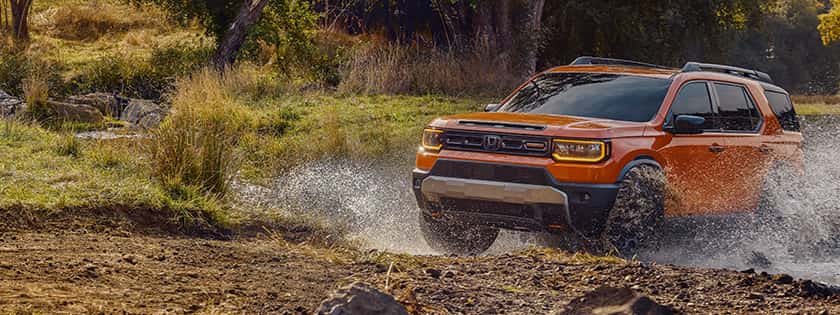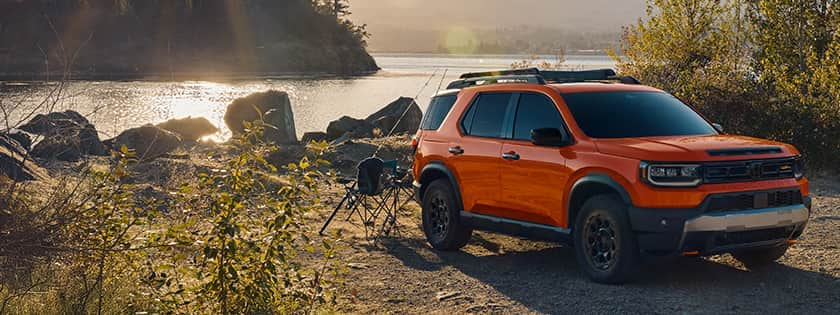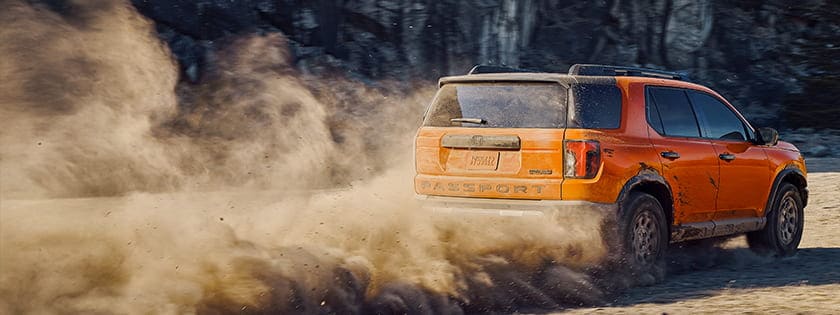
It doesn't really matter how close the 2012 Jeep Grand Cherokee SRT8 and the 2011 Porsche Cayenne Turbo are in terms of specs or performance. There's something just flat-out wrong with the way "Porsche vs. Jeep" sounds.
While we wrestle with the awkwardness of that statement, let's take a look at the specs. The 2012 Jeep SRT8 comes in with 470 horsepower from a 6.4-liter V8, it's got a five-speed automatic, weighs in at 5,256 pounds and costs $54,470 (base). On the other side of the fence is the 2011 Porsche Cayenne Turbo: 4.8-liter twin-turbo V8, 500 horsepower, eight-speed automatic, 5,112 pounds, $106,000 (base).
Each of these high-performance SUVs makes impressive power but take different routes to get there, and while the Jeep gained nearly 500 pounds in this generation, the Porsche managed to drop 400.
So how does the 2012 Jeep Grand Cherokee SRT8 stack up against the king of the hill?
Grand Cherokee SRT8 Porsche Cayenne Turbo
0-30 (sec): 1.8 1.8
0-45 (sec): 3.2 3.1
0-60 (sec): 5.1 4.6
0-60 with 1-ft Rollout (sec): 4.8 4.3
0-75 (sec): 7.5 6.7
1/4-mile (sec @ mph): 13.4 @ 101.8 12.8 @ 109
30-0 (ft): 28 27
60-0 (ft): 112 108
Skid pad lateral accel (g): 0.87 0.94
Slalom 67.2 67.0
Vehicle: 2012 Jeep Grand Cherokee SRT8
Odometer: 3,213
Date: 8-9-2011
Driver: Mike Monticello
Price: $54,470 (Base)
Specifications:
Drive Type: All-wheel drive
Transmission Type: Five-speed automatic
Engine Type: Longitudinal, Naturally aspirated V8
Displacement (cc/cu-in): 6,399/392
Redline (rpm): 6,200
Horsepower (hp @ rpm): 470 @ 6,000
Torque (lb-ft @ rpm): 465 @ 4,300
Brake Type (front): 15-inch vented discs with six-piston Brembo calipers
Brake Type (rear): 13.7-inch discs with four-piston Brembo calipers
Suspension Type (front): Independent double wishbones, coil springs, stabilizer bar
Suspension Type (rear): independent multilink, coil springs, stabilizer bar
Tire Size (front): 295/45 ZR20 (110Y)
Tire Size (rear): 295/45 ZR20 (110Y)
Tire Brand: Pirelli
Tire Model: P Zero
Tire Type: Summer performance
As tested Curb Weight (lb): 5,256
Test Results:
Acceleration
0-30 (sec): 1.8 (1.9 w/TC on)
0-45 (sec): 3.2 (3.4 w/TC on)
0-60 (sec): 5.1 (5.2 w/TC on)
0-60 with 1-ft Rollout (sec): 4.8 (4.9 w/TC on)
0-75 (sec): 7.5 (7.8 w/TC on)
1/4-Mile (sec @ mph): 13.4 @ 101.8 (13.6 @ 100.9)
Braking:
30-0 (ft): 28
60-0 (ft): 112
Handling
Slalom (mph): 67.2 ( 65.0 w/TC on)
Skid Pad Lateral acceleration (g): 0.87 ( 0.86 w/TC on )
Db @ Idle: 48.0
Db @ Full Throttle: 79.2
Db @ 70 mph Cruise: 65.4
Acceleration: Not as quick as the last GC SRT8. Turns out, an extra 50 horsepower can’t overcome an extra 500 (!) pounds. Launches hard off the line, but no wheelspin at all, even with power braking. Fairly quick, semi-abrupt upshifts from the old five-speed automatic, but tall gearing. Manual shifting via paddles or console lever (slap left for downshifts). Holds gears to redline. Does not blip throttle on downshifts.
Braking: Slightly longer travel and not quite as firm of a pedal as expected considering these are Brembos, but really terrific stopping ability. Minimum nosedive and the Jeep tracks dead straight every time. Almost zero ABS and tire noise.
Handling:
Skid pad: Front end feels quite ponderous around the skid pad. Understeers like crazy, and adjusting throttle doesn’t do a whole lot to counter it. Really abuses the front tires, but the grip number is pretty good considering this is a big, heavy SUV. ESC hardly intrusive, only slightly cutting throttle, when switched on.
Slalom: Wow, seriously impressive. Steering is intuitive, has good weighting, and in Track suspension mode the GC SRT8 just flat sticks. Body roll is very well controlled, and it almost doesn’t make sense that a tall vehicle like this can get around the cones so quickly. A constant slight understeer and AWD keep everything in check, and even with ESC fully off it never got out of shape. ESC on cuts some throttle and adds some brakes, but is not terribly intrusive.
Vehicle: 2011 Porsche Cayenne Turbo Tiptronic
Odometer: 2,612
Date: 10/26/10
Driver: Chris Walton
Price: $121,120
Specifications:
Drive Type: Four-wheel drive
Transmission Type: Eight-speed automatic
Engine Type: Twin-turbocharged V8
Displacement (cc/cu-in): 4,806/293
Redline (rpm): 6,600
Horsepower (hp @ rpm): 500 hp @ 6,000 rpm
Torque (lb-ft @ rpm): 516 lb-ft @ 2,250-4,500 rpm
Brake Type (front): 15.4-inch ventilated rotors with six-piston calipers
Brake Type (rear): 14.1-inch ventilated rotors with four-piston calipers
Suspension Type (front): Independent, dual control arms, air springs, dampers
Suspension Type (rear): Independent, multilink, air springs, dampers
Tire Size (front): 295/35R21 107Y
Tire Size (rear): 295/35R21 107Y
Tire Brand: Michelin
Tire Model: Latitude Sport
Tire Type: All-season
As tested Curb Weight (lb): 5,122
Test Results:
0-30 (sec): 1.8
0-45 (sec): 3.1
0-60 (sec): 4.6
0-75 (sec): 6.7
1/4-Mile (sec @ mph): 12.8 @ 109
0-60 with 1-ft Rollout (sec): 4.3
30-0 (ft): 27
60-0 (ft): 108
Slalom (mph): 67.0 (66.8 stability control on)
Skid Pad Lateral acceleration (g): 0.94g ( off and on )
Db @ Idle: 47.2
Db @ Full Throttle: 77.5
Db @ 70 mph Cruise: 65.5
Acceleration: Responds extremely well to pedal overlap, hoisting the nose skyward, and it stays there the entire run. Extremely smooth/fast shifts, especially in Sport mode. Power feels limitless and there are no dead spots in the rev range. Defies logic.
Braking: Initial braking runs were punctuated with anomalous lock-up of RF wheel (due to cold tires/brakes?). Once all elements were warm/hot, then brake feel/distance improved noticeably. Zero fade and near zero dive in Sport chassis mode.
Handling:
Skid pad: Huge grip. Amazingly adjustable attitude with throttle but without AWD weirdness shifting power around (like some other AWD systems have). With ESC on, there's a barely noticeable brake correction; however, the adjustability to the line with throttle is gone. Steering is light but informative.
Slalom: In Sport with ESC off, the Cayenne defies preconceptions of what a 4WD SUV should be able to do. Amazing turn-in, quick in transition, precise steering and an ability to actually use the AWD to its advantage, especially at exit with the throttle buried. With ESC on, there are slight brake corrections exactly at the limit of grip, effectively matching the car's (and driver's ) limits.




